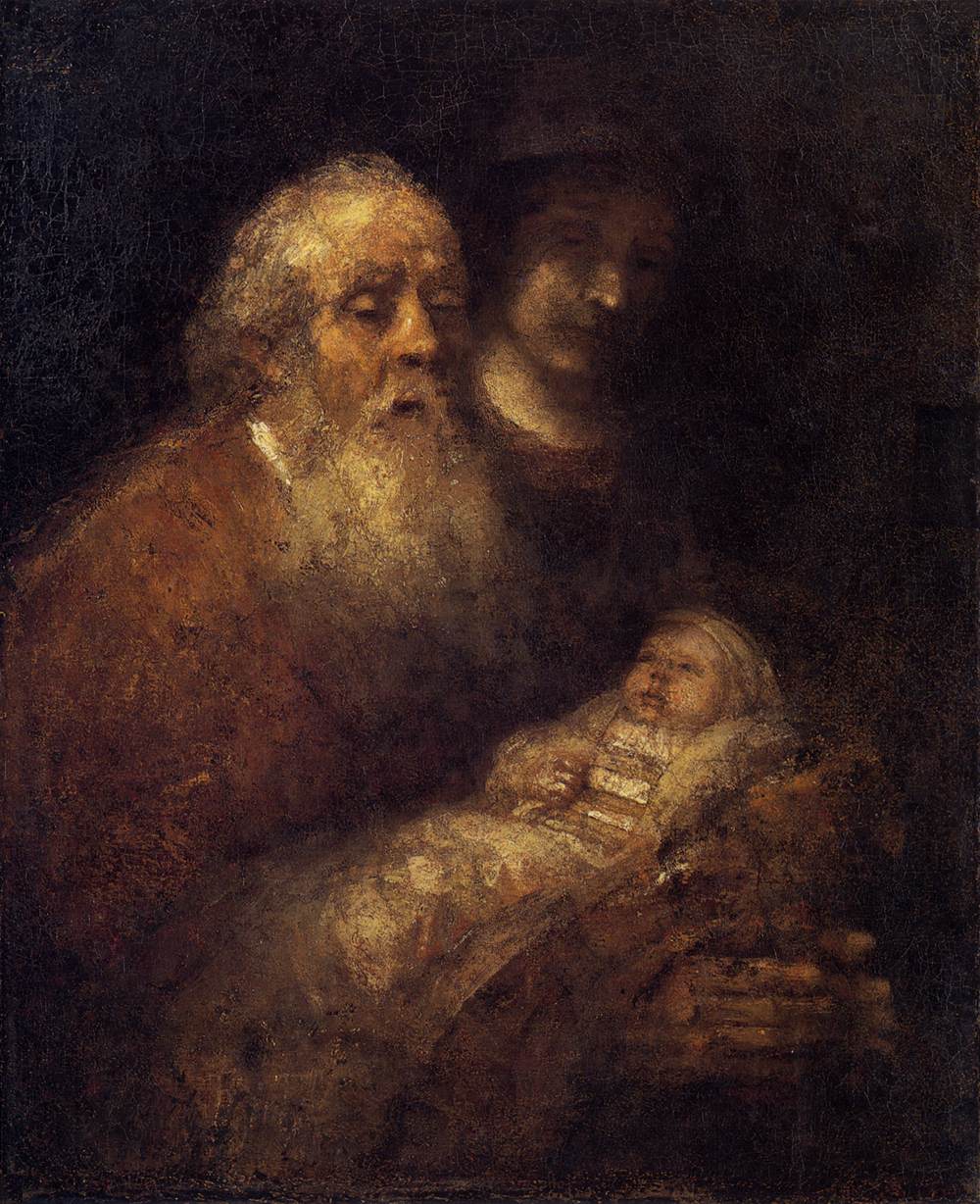This is his last painting, returning to a beloved subject for the final time, unfinished at his death, and a visual sibling of the Nunc Dimittis or Bach’s Ich Habe Genug. The old man holds in his hands not just a tiny child, but hope, a nation, redemption: no wonder he looks tired. His closing eyes hand on the privilege and the burden of vision to the next generation, and witness the tender complicity and temporal symmetry (good name for a band) between the two, as we see age momentarily rejuvenated by a small being with it all still to come. The figures emerge from the darkness in light and an indefinition that suggests (for differing reasons) that neither is completely of this realm. I love that Simeon’s hands are too frail even to cradle the child. Above all, we see the past and the future colluding in one moment, showing us both ends of life, while saying so much about what goes on between the two. Rembrandt’s final creation speaks, where its subjects can’t, with such compassion about what’s at the heart of things: beginnings and endings, the grace of comprehension, the capacity to embrace one’s own mortality, and a sense of existential fulfilment.

 Easter Morning – Caspar David Friedrich
Easter Morning – Caspar David Friedrich